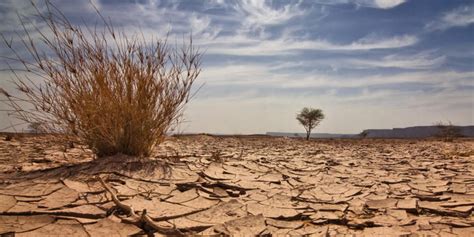By Christopher Burke
Africa holds immense potential to contribute to global efforts mitigating carbon emissions based on the continent’s vast natural resources, biodiversity and rapidly growing economies. Unlocking this potential requires innovative approaches that leverage cutting-edge technologies such as Geographic Information Systems (GIS) and emerging spatial technologies. Harnessing these tools provides Africa with an opportunity to combat climate change and foster sustainable development through the creation of carbon credits.
Carbon credits are certificates that represent the reduction or removal of one tonne of carbon dioxide or its equivalent from the atmosphere and used as a tool to help control and reduce global greenhouse gas emissions. The African Carbon Markets Initiative (ACMI) was launched at the 2022 United Nations Climate Conference (COP27) making climate finance available in Africa, expanding access to clean energy and driving sustainable economic development. ACMI is expected to produce 300 million carbon credits annually by 2030 and 1.5 billion credits annually by 2050.
Leaving aside the significant skepticism associated with the efficacy and viability of carbon credits, the initiative is projected to create 30 million jobs by 2030 and over 110 million jobs by 2050 unlocking US$6 billion in revenue by 2030 and over US$120 billion by 2050. ACMI gives individuals, companies and governments opportunities to fund climate related projects on the continent that reduce emissions including reforestation and forest conservation initiatives, renewable energy, carbon-storing agricultural practices and capturing carbon from the air. Investors receive carbon credits in the form of certificates that “offset” the emissions they continue to produce in return for funding these projects.
GIS provides an exceedingly powerful tool for capturing, analyzing and visualizing spatial data that has revolutionized our understanding of environmental dynamics explained Carolina Reynoso Pieters, Senior Director of Global Programs at the Cadasta Foundation. Carolina recently visited the International Land and Forest Tenure Facility in Stockholm and met with representatives at the Swedish International Development Agency (SIDA) to discuss the application of these emerging technologies.
GIS enables precise mapping of carbon stocks and fluxes. This is essential for quantifying emissions reductions and sequestration efforts associated with carbon credit development. Through satellite imagery, remote sensing and ground-based data collection, GIS facilitates the monitoring of land-use changes, forest degradation and ecosystem health. These are all critical factors in carbon accounting.
Monitoring forests has been a core application of GIS in carbon credit development. Africa still has vast stretches of tropical rainforest representing critical carbon sinks. Deforestation and forest degradation are significant threats to these ecosystems and consequently carbon credit initiatives. GIS technology allows for the identification of deforestation hotspots enabling targeted intervention strategies. GIS-based forest inventories provide essential data for REDD+ (Reducing Emissions from Deforestation and Forest Degradation) initiatives that offer financial incentives for forest conservation and sustainable management.
Emerging spatial technologies such as LiDAR (Light Detection and Ranging) have unparalleled capabilities for the high-resolution mapping of forest structure and biomass stated Bogdan Dovleac, general manager at the Romanian based firm GisBox with substantial experience in Africa. By precisely quantifying carbon stocks, LiDAR enhances the accuracy of carbon credit assessments increasing investor confidence and facilitating market access for African countries.
Beyond forests, GIS plays a crucial role in other sectors with significant carbon mitigation potential including agriculture and renewable energy. Spatial analysis enables optimized land-use planning for carbon-sequestering activities such as agroforestry and reforestation. GIS also facilitates the identification of suitable sites for renewable energy projects such as solar and wind farms that contribute to emissions reductions and sustainable development.
A number of challenges are yet to be overcome to realize the full potential of GIS and spatial technologies for carbon credit development in Africa. Chief Technology Officer at Equatorial Power Abishek Bharadwai in Uganda submitted that carbon credits are still in their infancy across the continent. Capacity building and technology transfer is urgently required by governments, non-government organizations (NGOs) and communities to make effective use of these tools. Investment in training programs and the establishment of partnerships with academic institutions and technology providers can address this gap.
Data accessibility and quality also remain significant hurdles. While satellite imagery and remote sensing data are increasingly available, there are disparities in access and resolution particularly in remote and marginalized regions. Ground-truthing and validation efforts are essential to ensure the accuracy of GIS-based assessments. Collaborative data-sharing initiatives and quality assurance protocols can help address these challenges and promote transparency and accountability in carbon credit projects.
Regulatory frameworks and institutional support play a vital role in developing and scaling up carbon credit initiatives across Africa. Value chain specialist at the UN Food and Agricultural Organization (FAO) in Uganda Rosemirta Birungi emphasized that the commercialization of carbon credits demands a sustainable and supportive environment to thrive.
Rosemirta stressed the need for clear guidelines and standards for carbon trading -including stocking, accounting, marketing, monitoring and verification critical to promote confidence among carbon value chain investors and buyers. Governments have key roles to play in the creation of an enabling environment through policy incentives comprising tax breaks and subsidies for carbon-friendly practices and the development of regulatory mechanisms to enforce compliance and prevent green washing.
Indigenous and local communities that often depend on forest resources for livelihoods must be actively involved in decision-making processes and benefit-sharing mechanisms. Community-based monitoring and participatory mapping can empower these stakeholders to ensure that carbon offset projects are equitable and socially sustainable.
Carbon credit markets are subject to extreme volatility and uncertainty influenced by a range of factors including policy changes, market dynamics and public perception. While carbon pricing mechanisms such as cap-and-trade systems provide financial incentives for emissions reductions, they must be accompanied by robust governance mechanisms to prevent market manipulation and ensure environmental integrity.
Despite these challenges, the potential benefits for leveraging GIS data and emerging spatial technologies for carbon credit development in Africa are very clear. These initiatives contribute to global climate goals and drive sustainable development creating green jobs, protecting biodiversity and enhancing resilience to climate change impacts.
Africa stands at a crossroads in the fight against climate change. GIS and spatial technologies offer powerful tools to navigate the path ahead. The continent can unlock its vast carbon mitigation potential by embracing technological innovation, strengthening partnerships and addressing barriers to implementation to pave the way towards a more sustainable and prosperous future.
…………………………………………………………………………………………………………….
Christopher Burke is the Managing Director of WMC Africa, a communications and advisory agency in Kampala, Uganda. He has almost 30 years’ experience working on a broad range of issues in social, political and economic development focused on land governance, extractives, communications and peace-building based in Asia and Africa.








I really like your writing style, fantastic information, appreciate it for posting : D.
magnificent post, very informative. I wonder why the other specialists of this sector do not notice this. You should continue your writing. I am confident, you’ve a huge readers’ base already!
I’ve been exploring for a little bit for any high quality articles or blog posts on this kind of area . Exploring in Yahoo I at last stumbled upon this web site. Reading this information So i am happy to convey that I have a very good uncanny feeling I discovered just what I needed. I most certainly will make sure to do not forget this website and give it a look regularly.